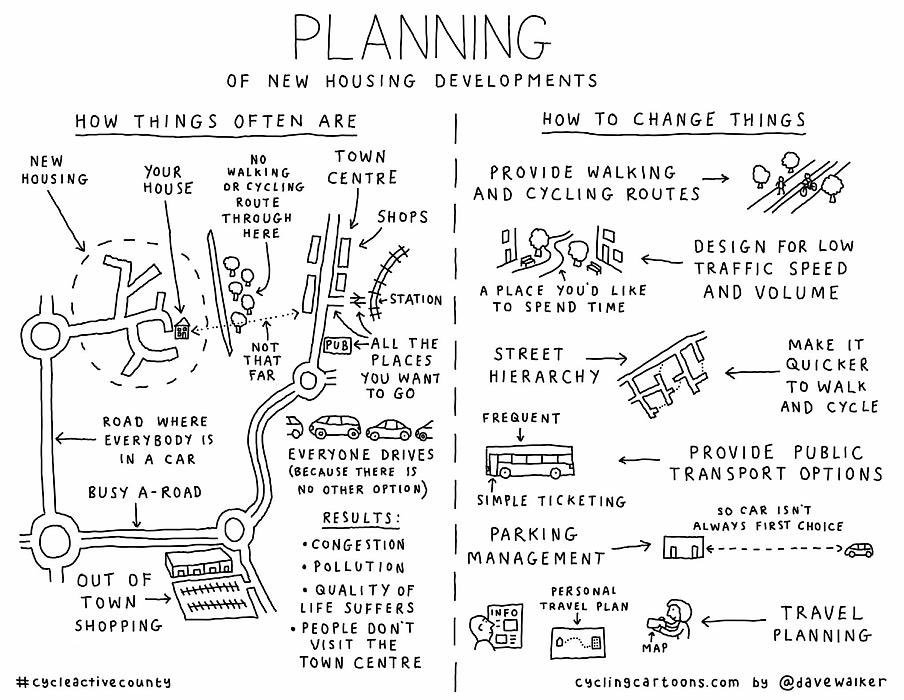Sublime
An inspiration engine for ideas
Make "New Towns" to Create Walkable, Bikeable, Transit-oriented Places
Justin Hollanderopen.substack.com
Over the past twenty years, there has been a push for zoning reforms in urban and suburban areas. Inner-city economies have shifted from a basis on manufacturing to service and consumption. Downtowns are now hubs for entertainment and commerce and are increasingly also being seen as destinations for living. A new generation of people—empty nesters
... See moreJohn MacDonald • Changing Places: The Science and Art of New Urban Planning

Urban planning
Eric J • 1 card
MANHATTAN AS MECCA If—in America—dense, transit-served cities are better, then New York is the best. This is the clear and convincing message of David Owen’s Green Metropolis, certainly the most important environmental text of the past decade. This book deserves a bit more of our attention, so profound is the revolution in thinking that it
... See moreJeff Speck • Walkable City: How Downtown Can Save America, One Step at a Time
In another poll, the devoutly nonideological Consumer Preference Survey, respondents favored public transportation over road building as a solution to congestion by almost three to one.● The actual funding allocation currently favors roads four to one over transit,9 so it would seem that a major correction is in order.
Jeff Speck • Walkable City: How Downtown Can Save America, One Step at a Time
